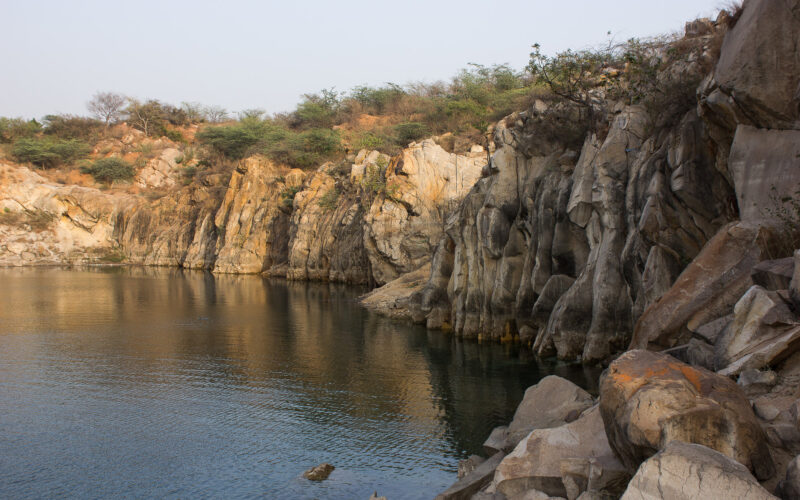Nestled amidst the city’s landscape, Death Valley remains a subject of intrigue and debate, evoking diverse perceptions among people. Some consider it a curse, a foreboding name that hints at its perilous waters claiming lives over the years. Others view it as a natural wonder, an ancient wildlife ecosystem offering solace and tranquility to those seeking respite from the bustling city life. The reality, however, lies somewhere in between, as Death Valley stands as a paradoxical blend of beauty and danger, attracting curious tourists from near and far.
One of the defining features of Death Valley is its stunning crystal blue water. Legend has it that miners digging deep into the earth struck an underground water source, leading to the creation of lakes within the quarries of the surrounding mines. These naturally formed lakes, with their serene and glistening waters, have become both alluring and treacherous, drawing visitors in with their charm while hiding the dangers that lie beneath.
Among the various lakes in Death Valley, one has garnered particular attention – Bhardwaj Lake, ominously referred to as the “Khooni Lake” or “Bloody Lake.” Local lore attributes the lake with a grim reputation, claiming that it consumes three lives each year. However, upon closer examination, these claims seem to be rooted more in superstition than fact. Most of the tragic incidents involve careless individuals or inexperienced swimmers who venture into the water without adequate precautions, overlooking the risks associated with the seemingly tranquil lake.
Despite its notorious reputation, the true beauty of Bhardwaj Lake cannot be denied. The sight of its pure, crystal blue water against the backdrop of the surrounding landscape is nothing short of breathtaking. Yet, it serves as a stark reminder of the delicate balance between nature’s allure and its potential hazards.
Over time, authorities have recognized the importance of safety, and swimming in the lake is now strictly prohibited. Tourists are advised to enjoy the scenic beauty from a distance, ensuring their own well-being and respecting the tranquility of the ecosystem.
The legend and lore surrounding Death Valley contribute to its enigmatic aura, attracting adventurous souls seeking to experience its intriguing duality. For some, it is a place of mystery and thrill, beckoning them to explore its untamed depths and unravel its secrets. For others, the valley serves as a cautionary tale, a reminder of the consequences that can arise from underestimating the forces of nature.
As visitors tread the fine line between fascination and respect, Death Valley remains a living testament to the delicate harmony that exists within the natural world. It urges us to acknowledge both its allure and its risks, encouraging responsible tourism that preserves the valley’s beauty while safeguarding the well-being of those who venture into its embrace.
While the ominous name may stir curiosity, it is essential to remember that Death Valley, like any other natural wonder, demands respect and careful consideration. As travelers explore this mesmerizing landscape, they are reminded of the inherent responsibility we bear in our interactions with the environment. By embracing safety measures and cherishing the beauty of Death Valley from afar, visitors can create cherished memories without endangering themselves or the delicate ecosystem that defines this captivating corner of the city.
Death Valley’s allure lies not only in its scenic grandeur but in the lessons it imparts. It is a place that underscores the coexistence of beauty and danger, prompting introspection and appreciation for the wonders that nature presents. In the face of the valley’s duality, we find an opportunity to forge a deeper connection with the world around us, acknowledging both its splendor and its power, and leaving us with a lasting sense of awe and wonder.
